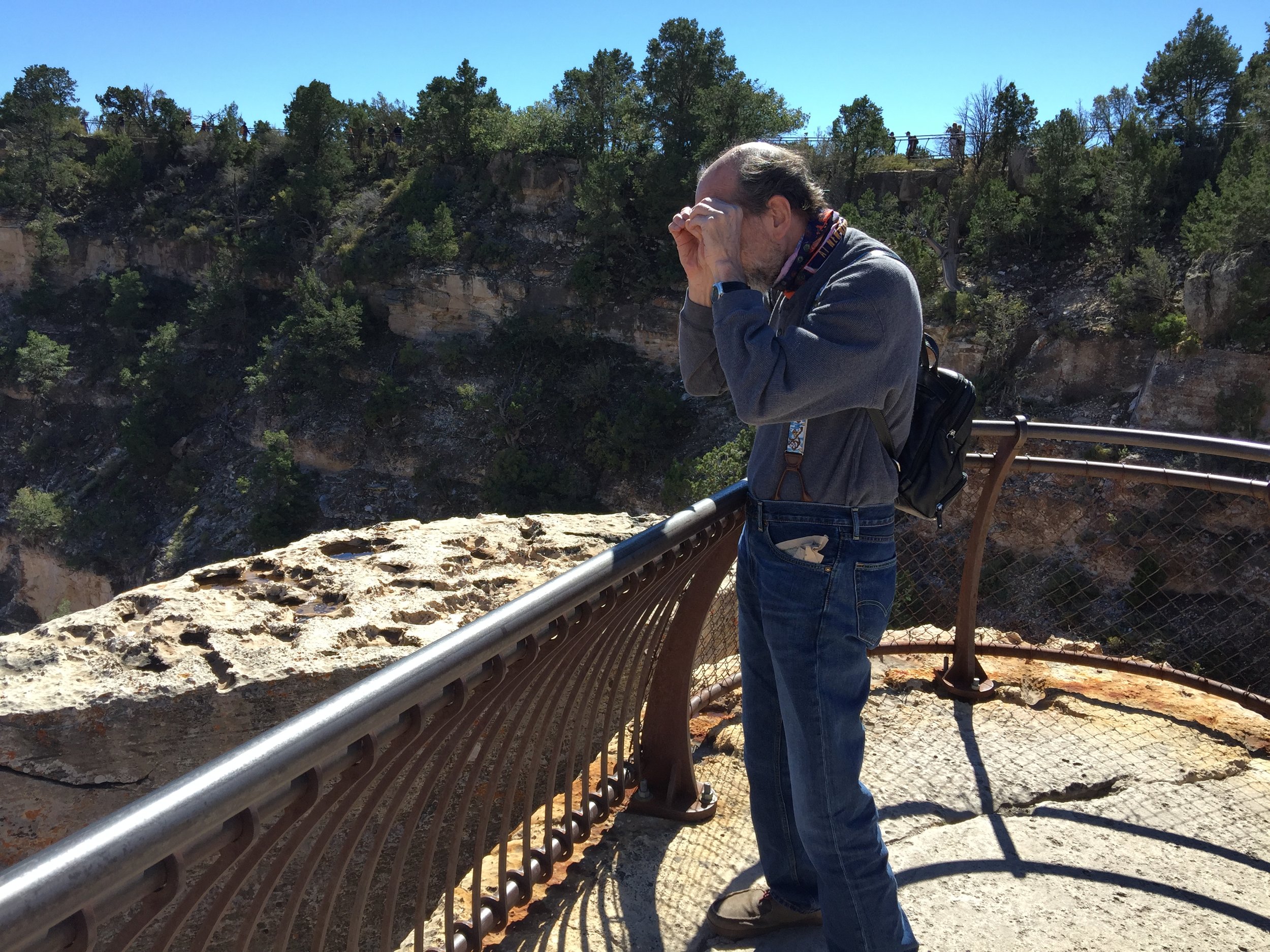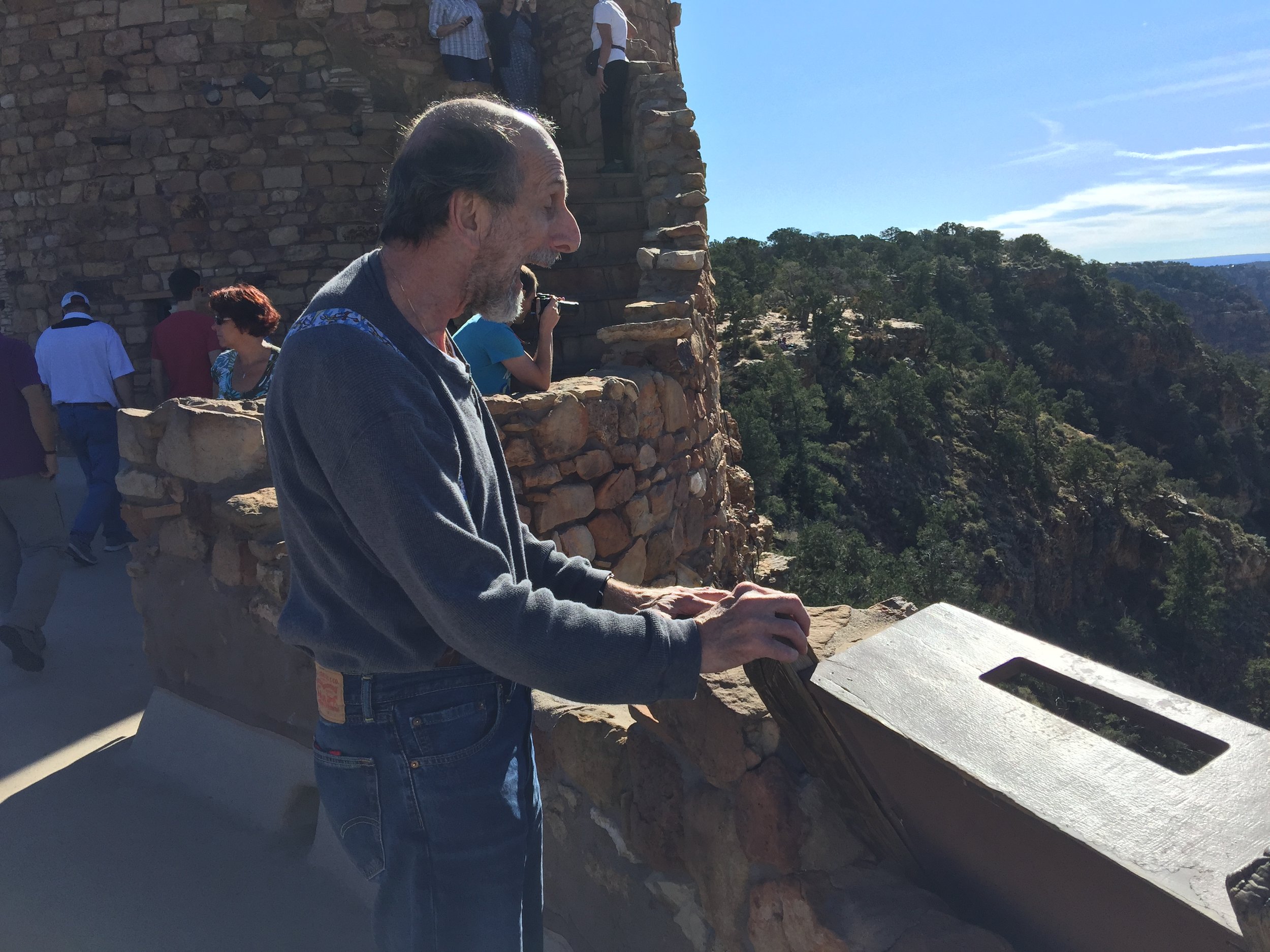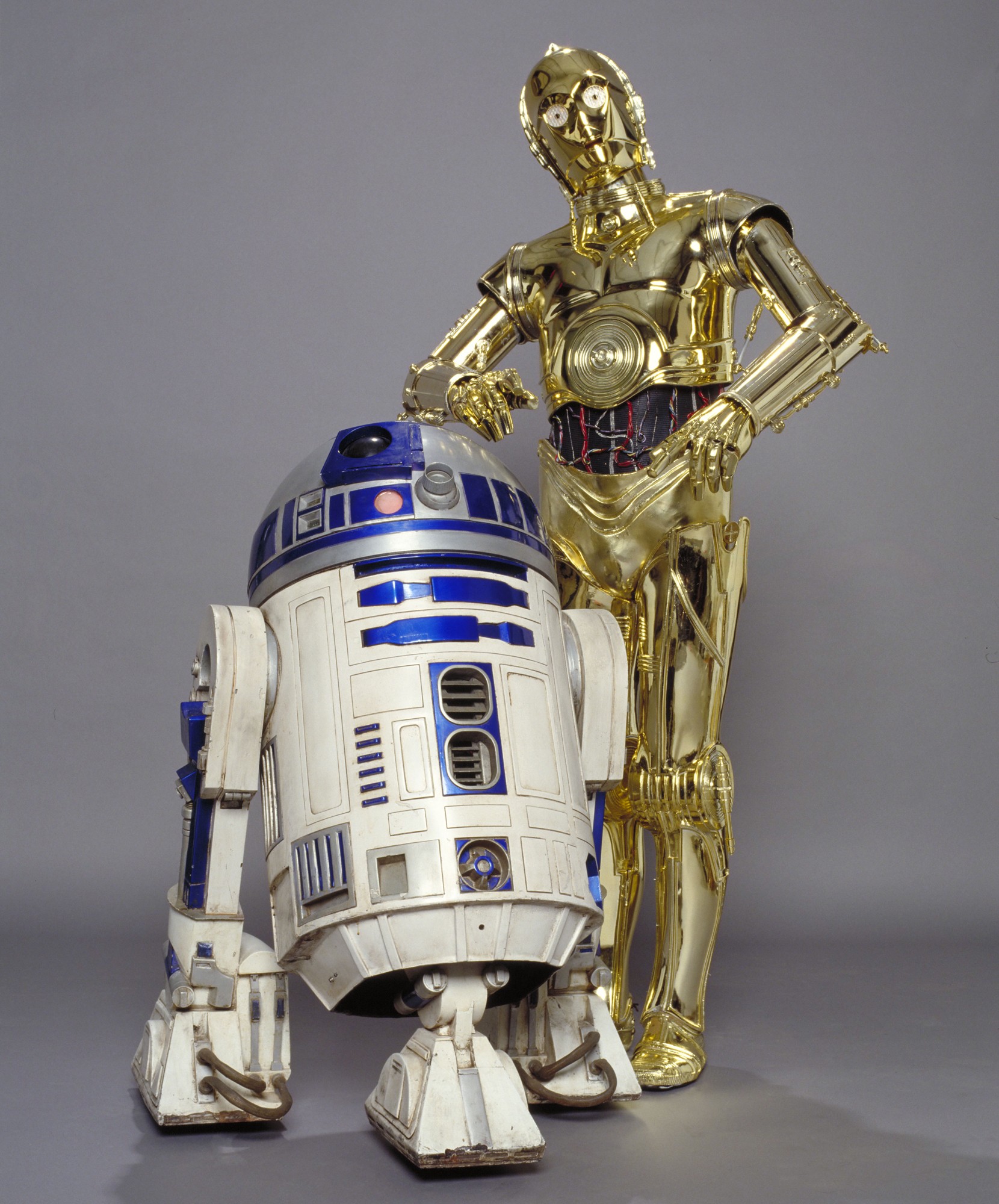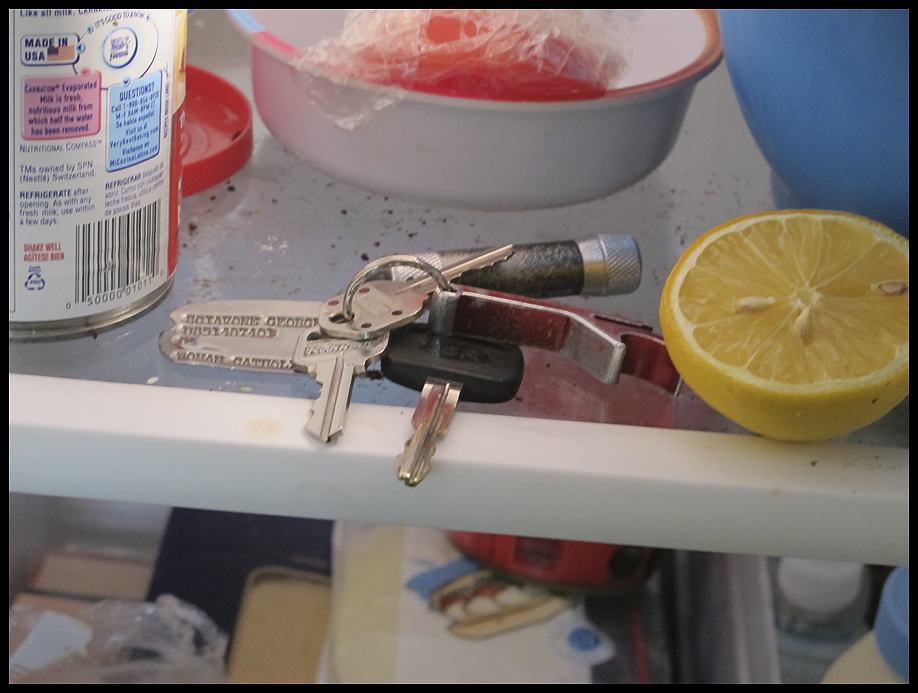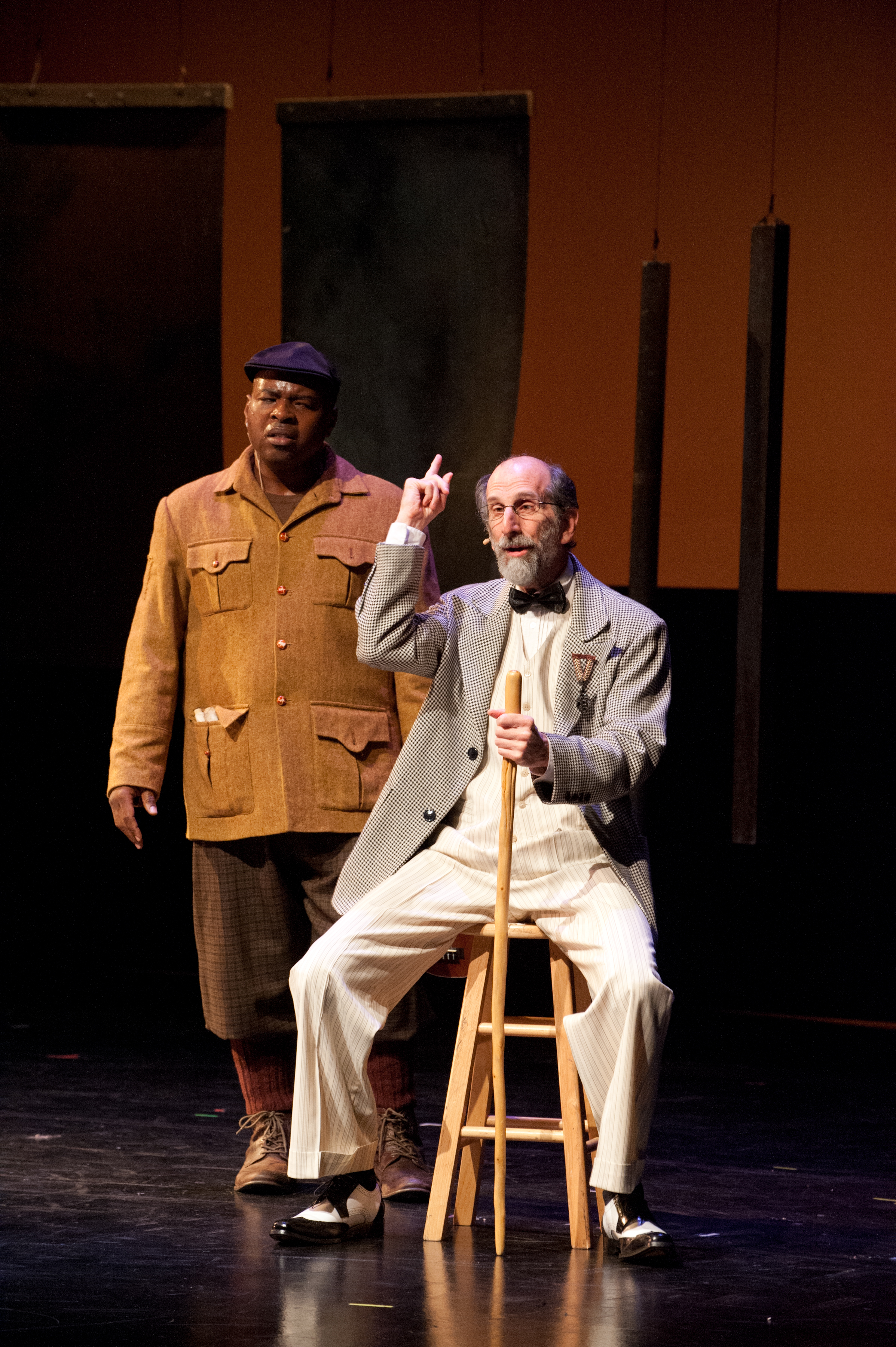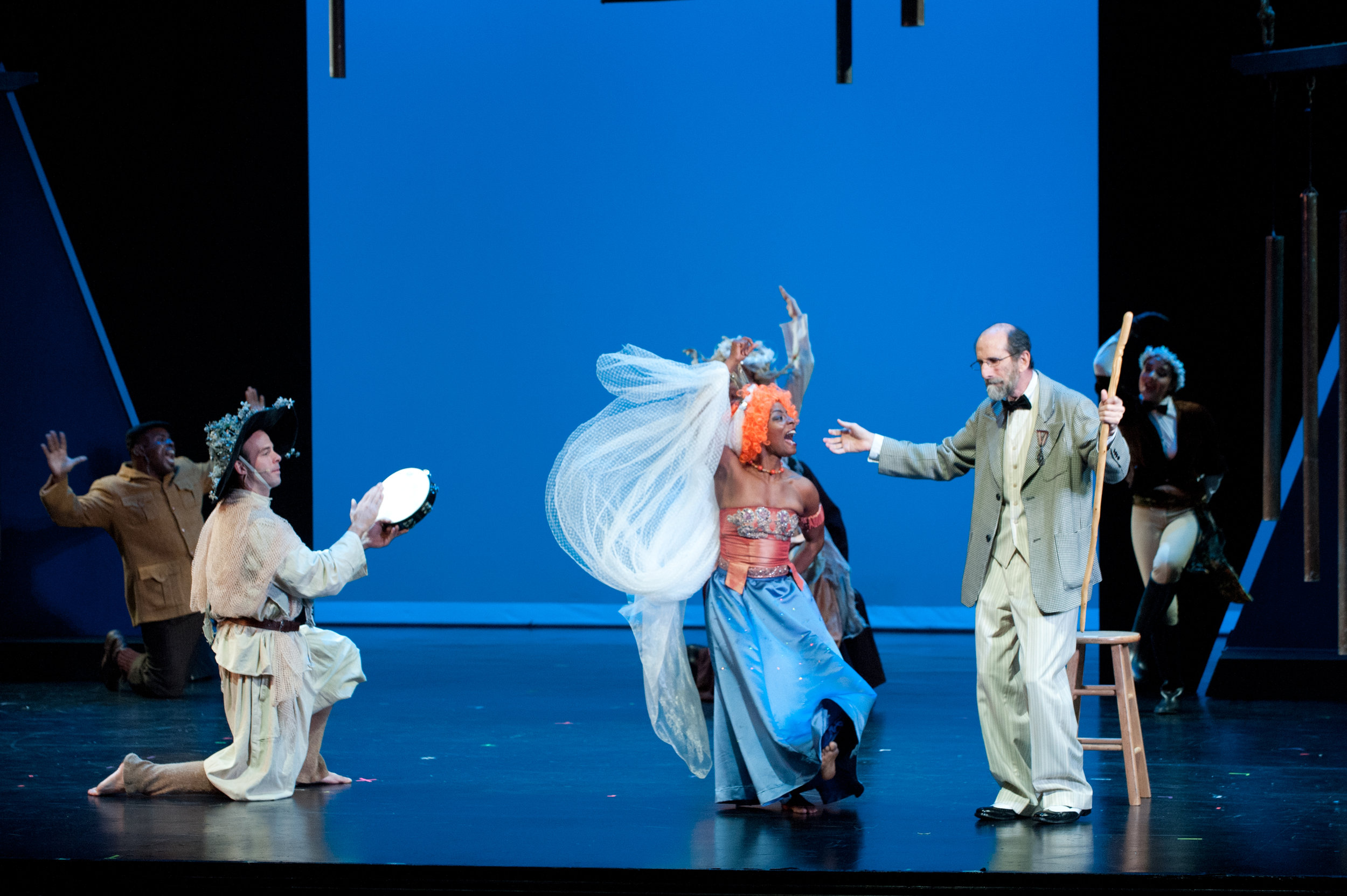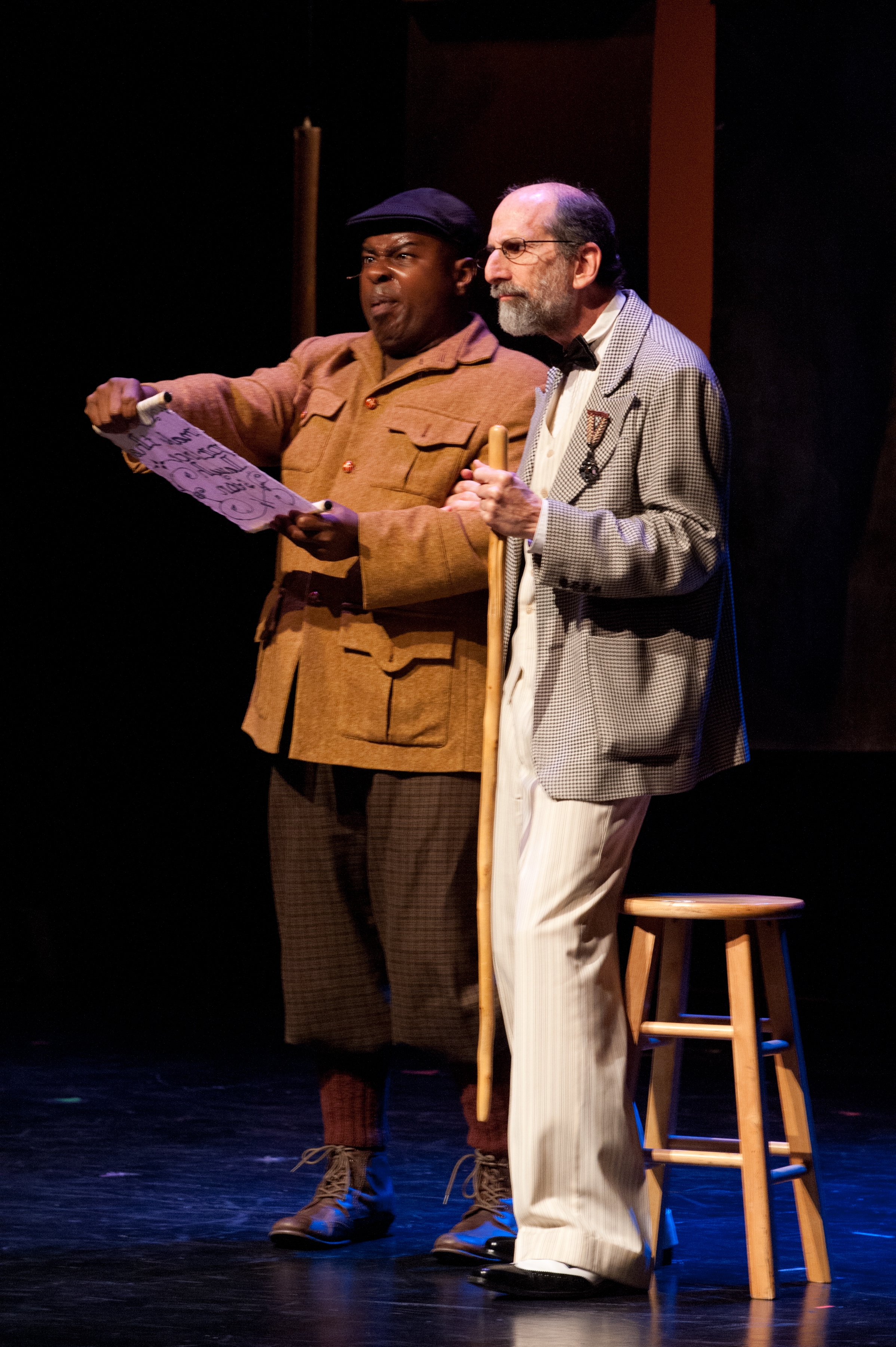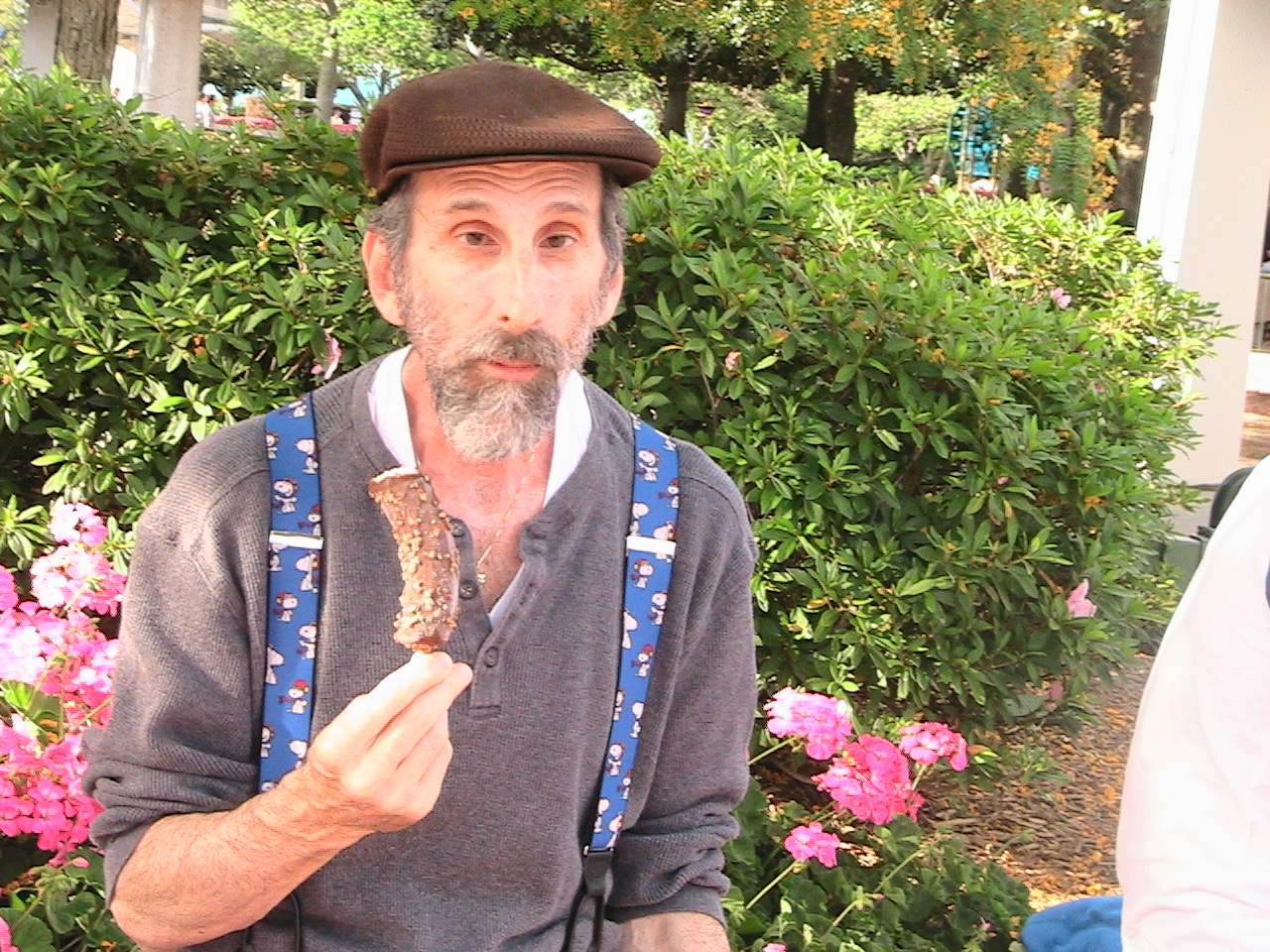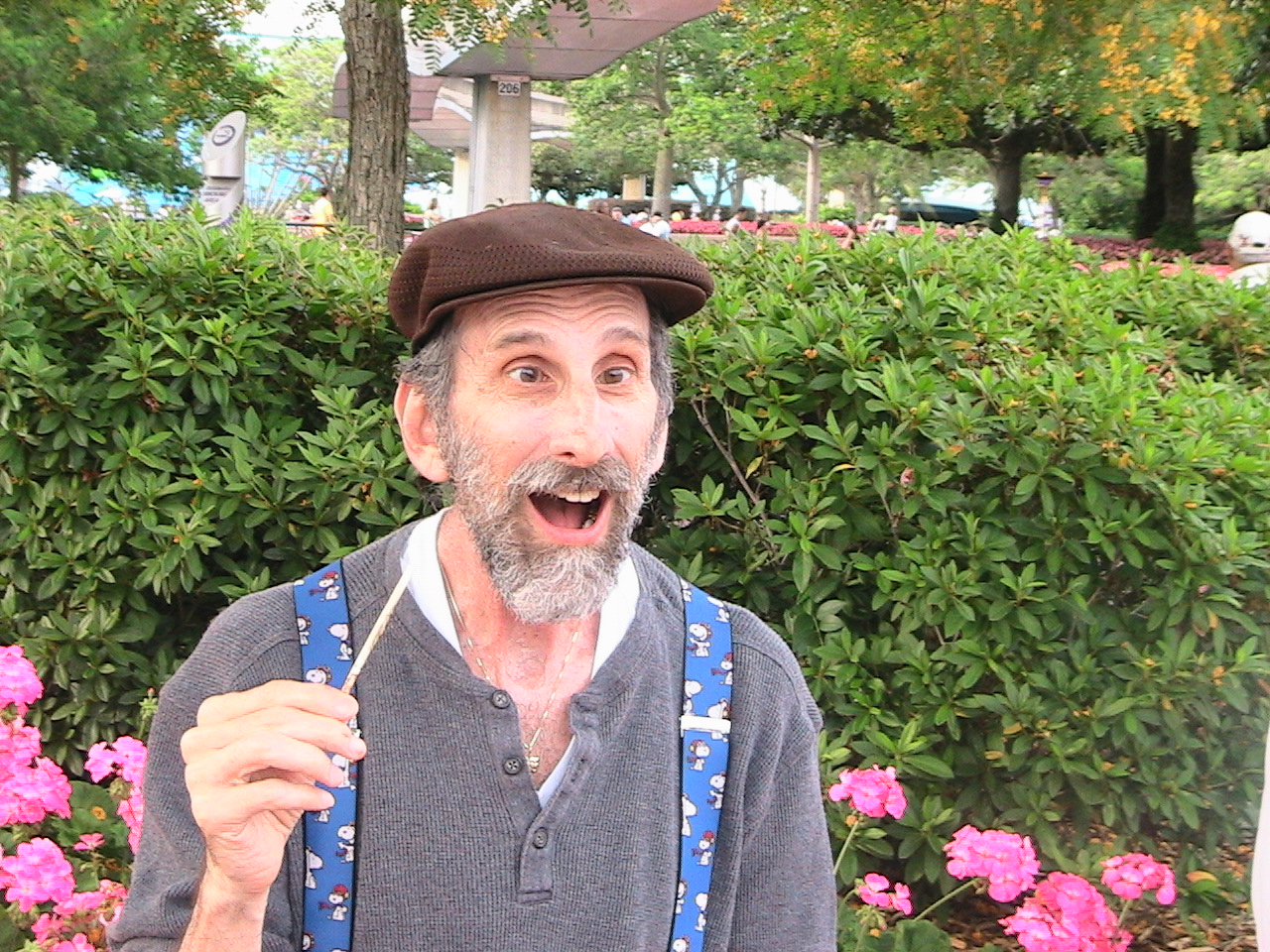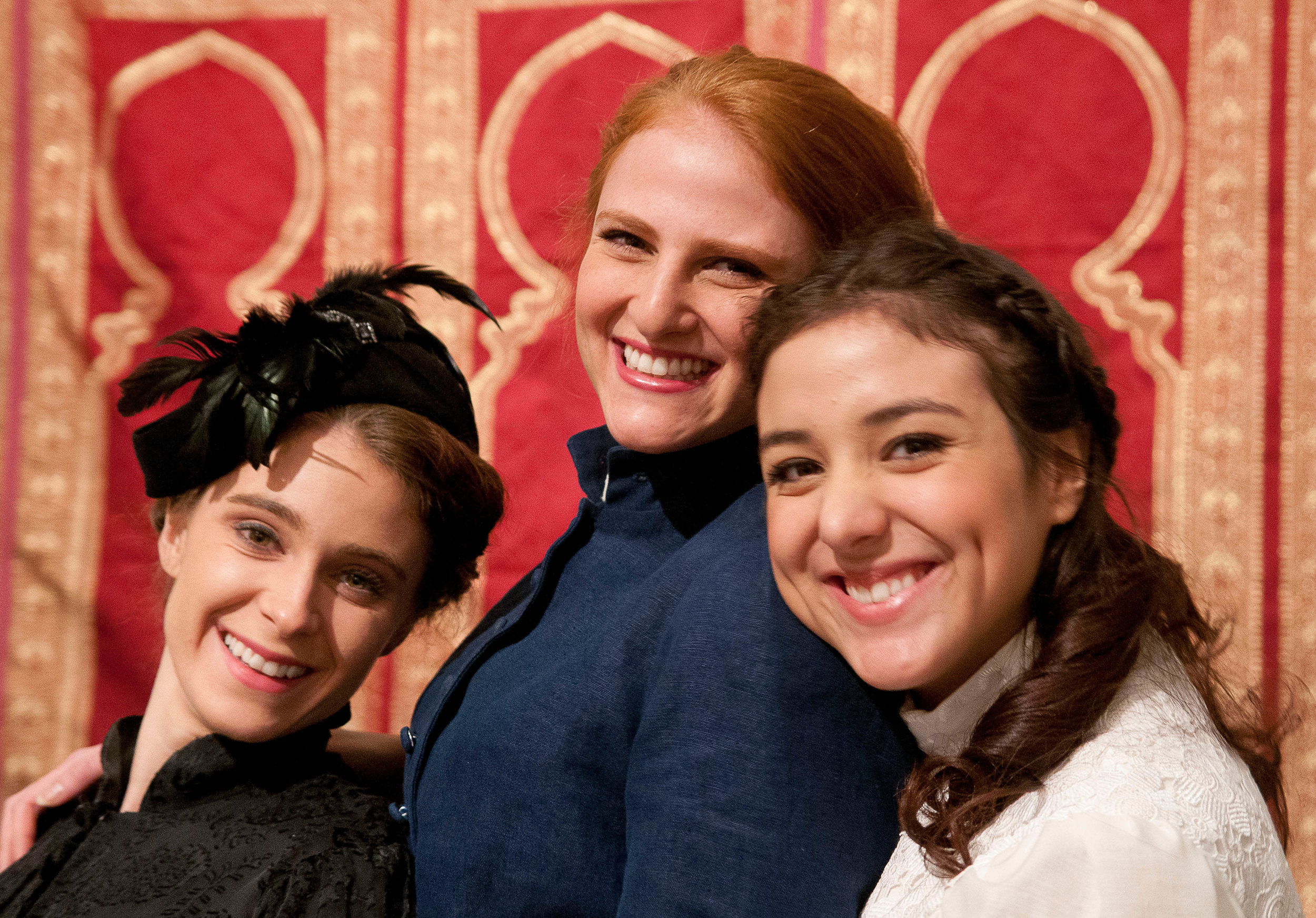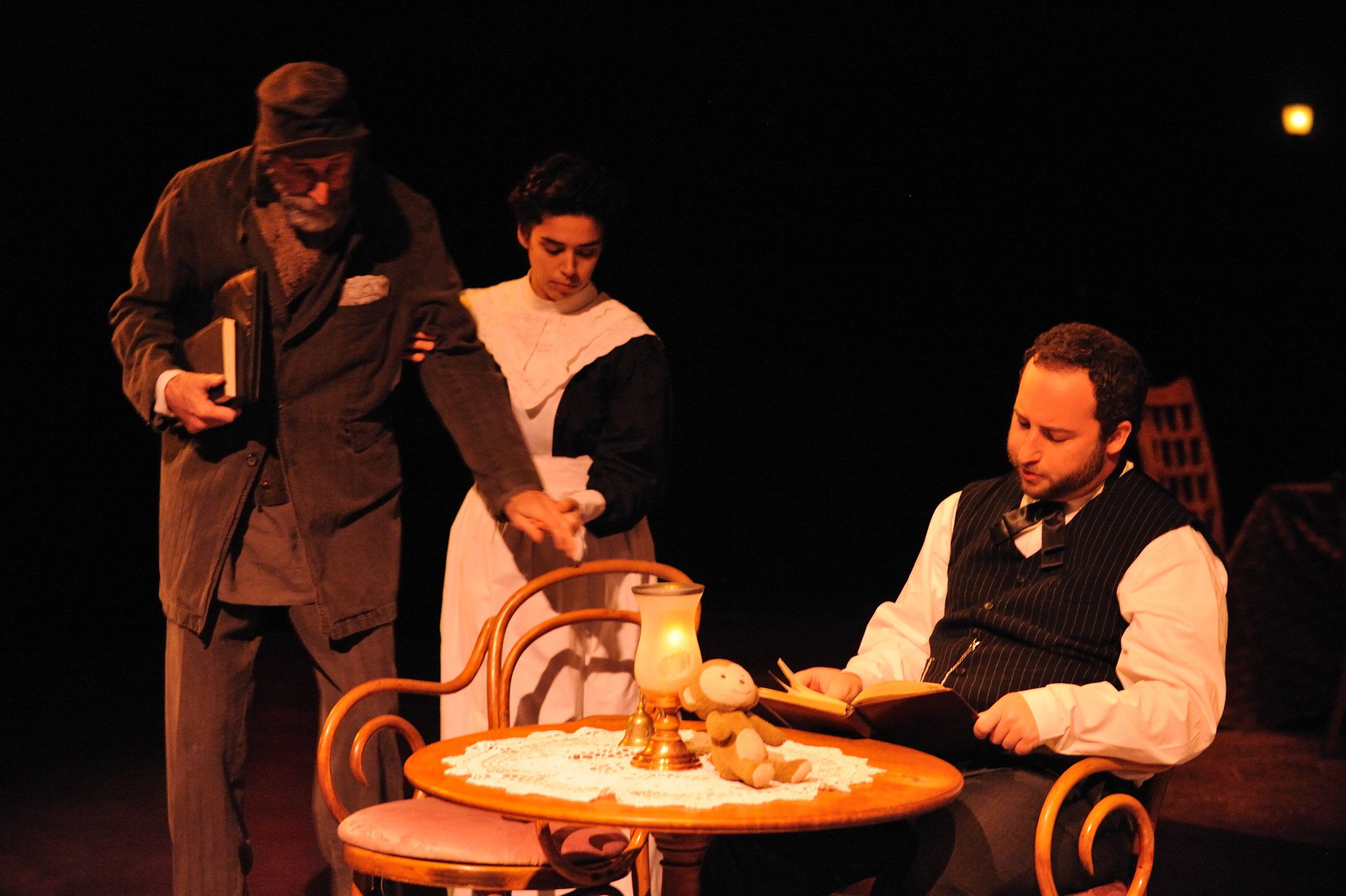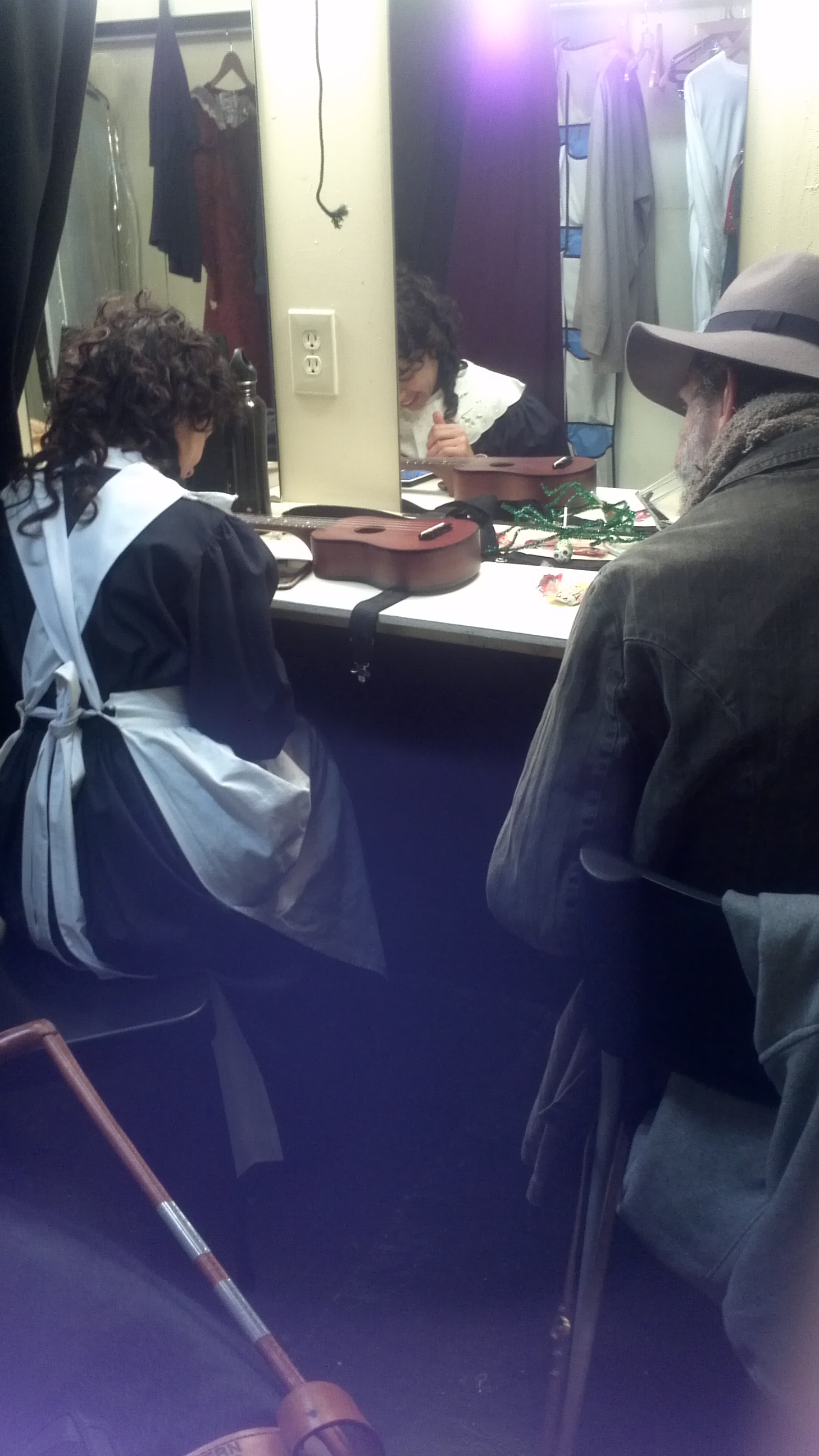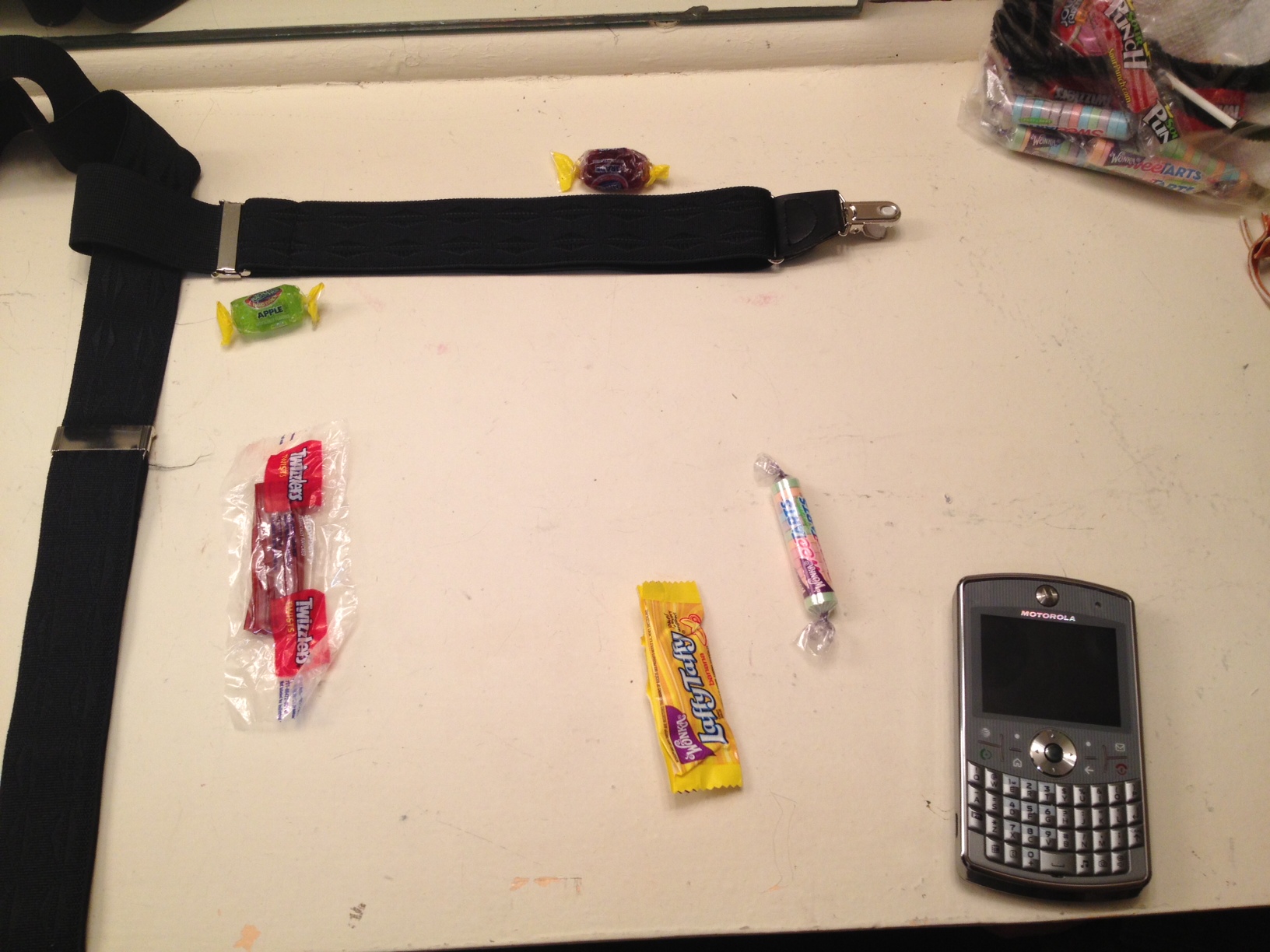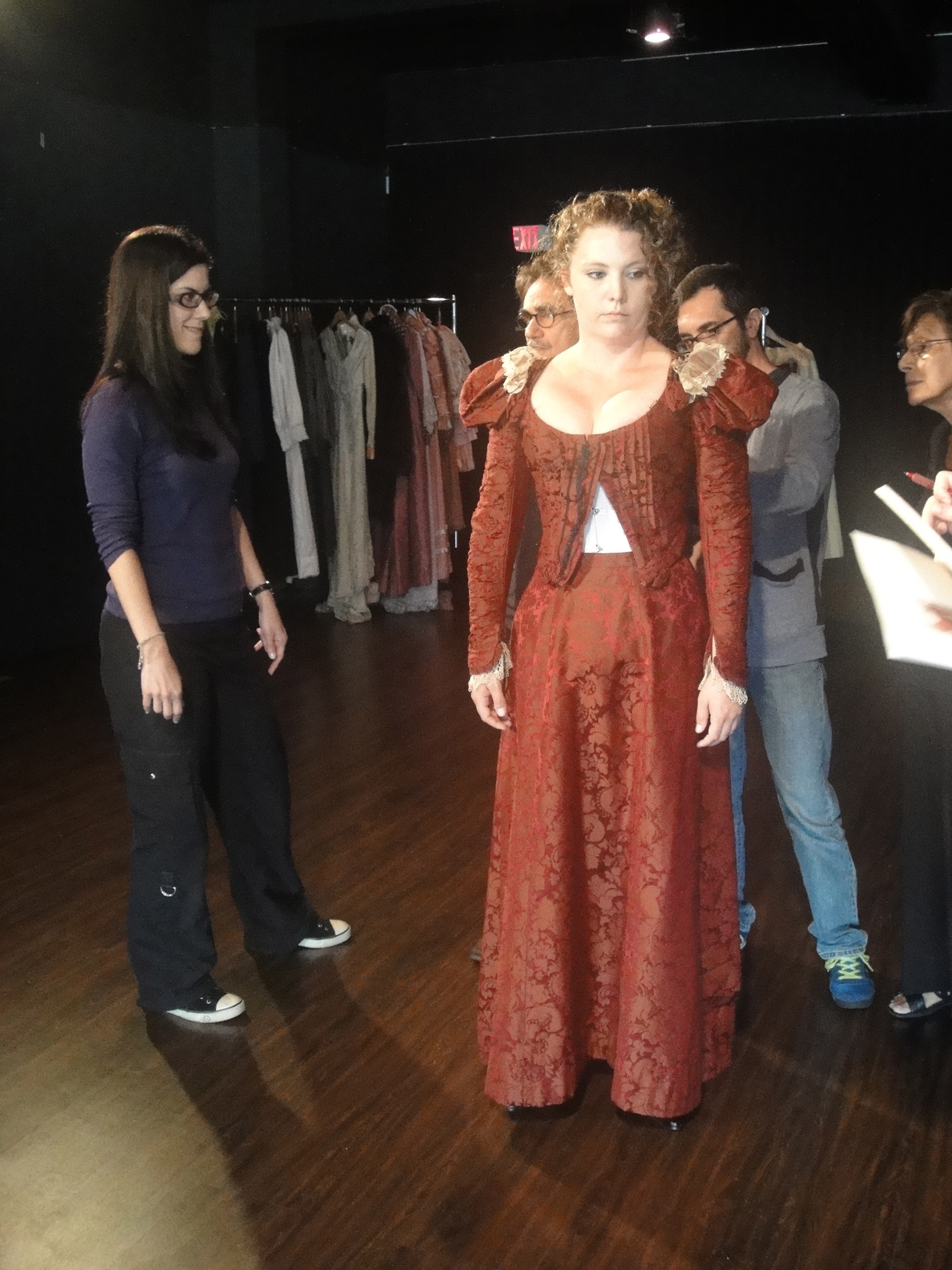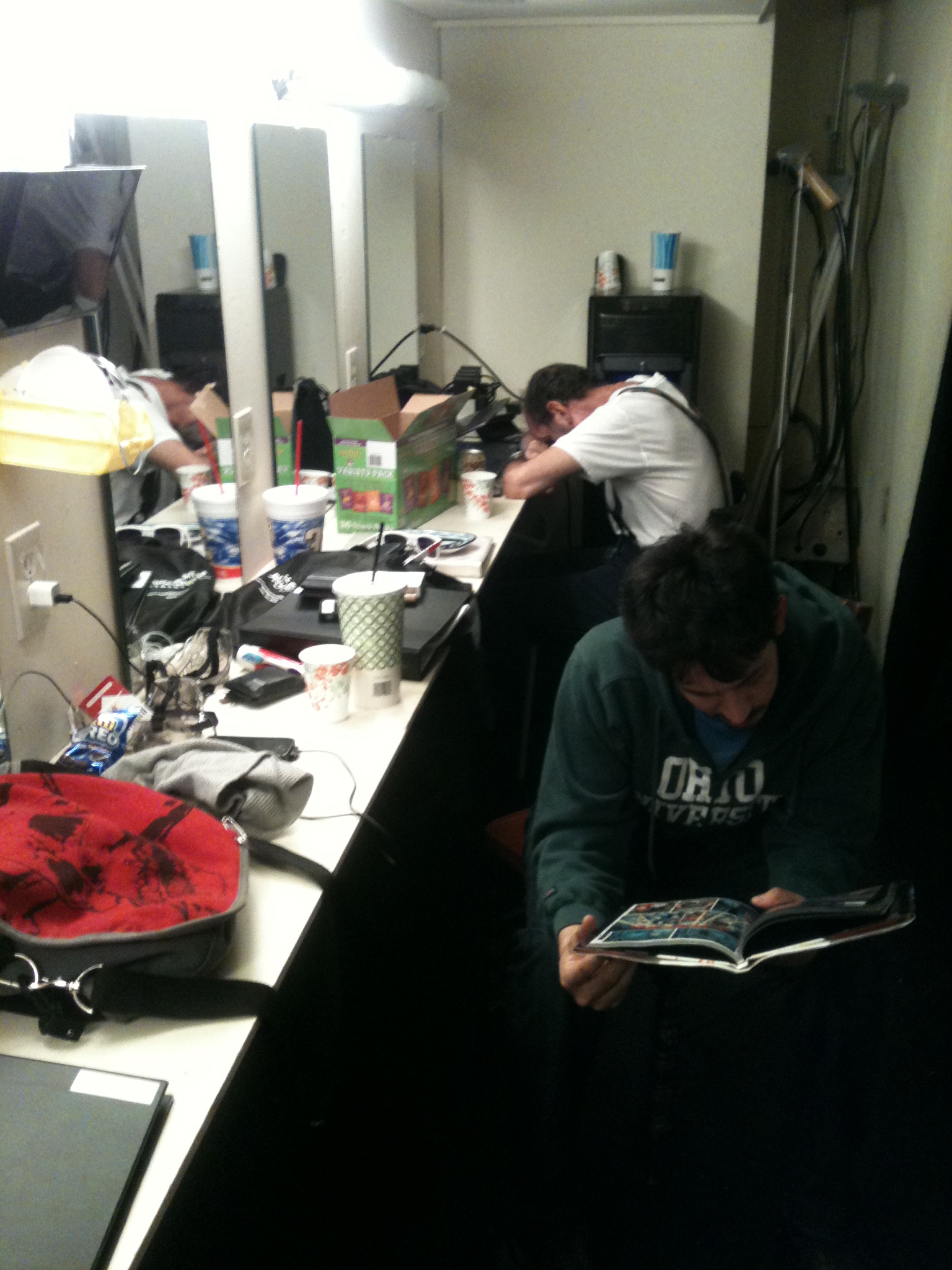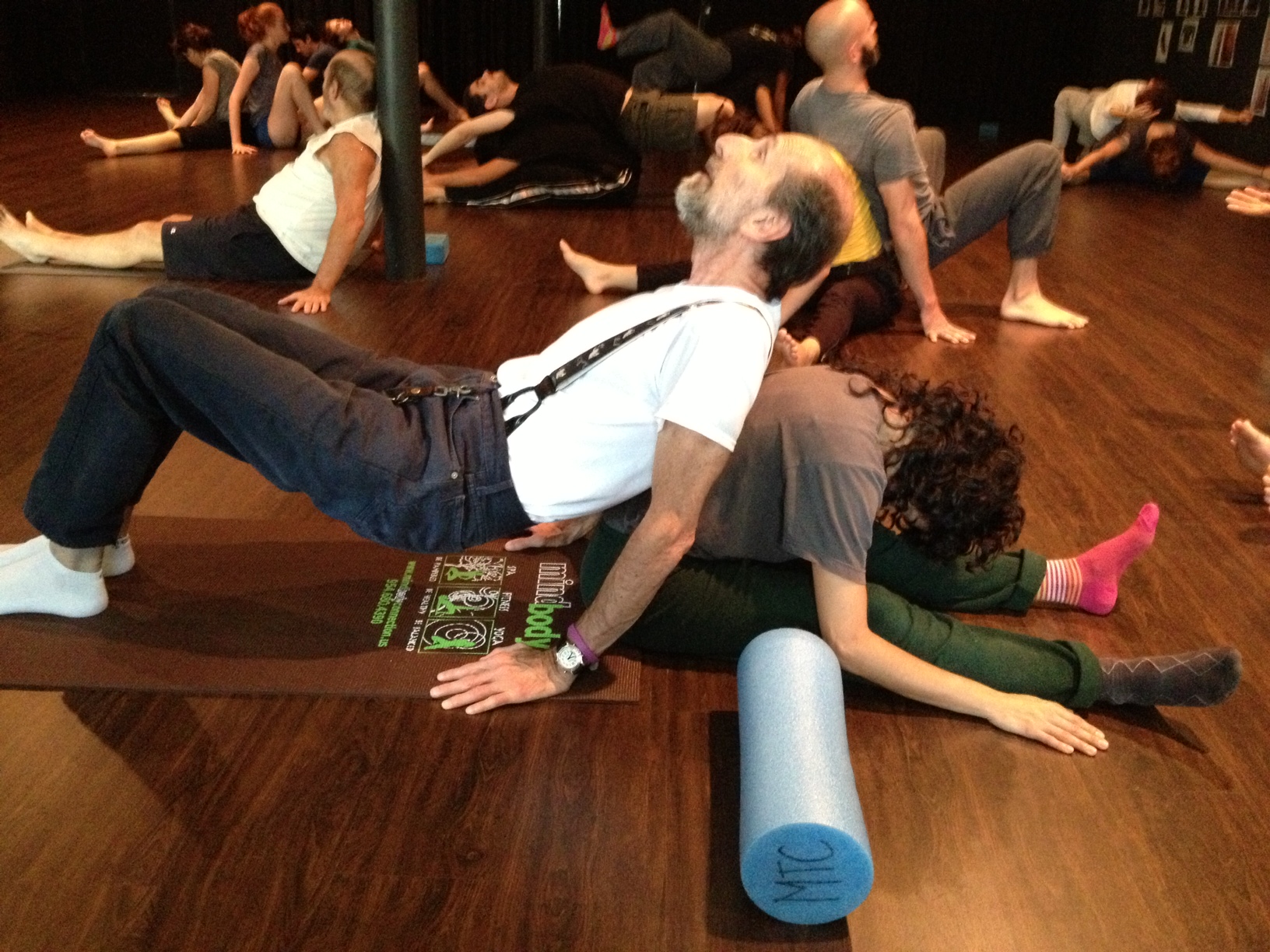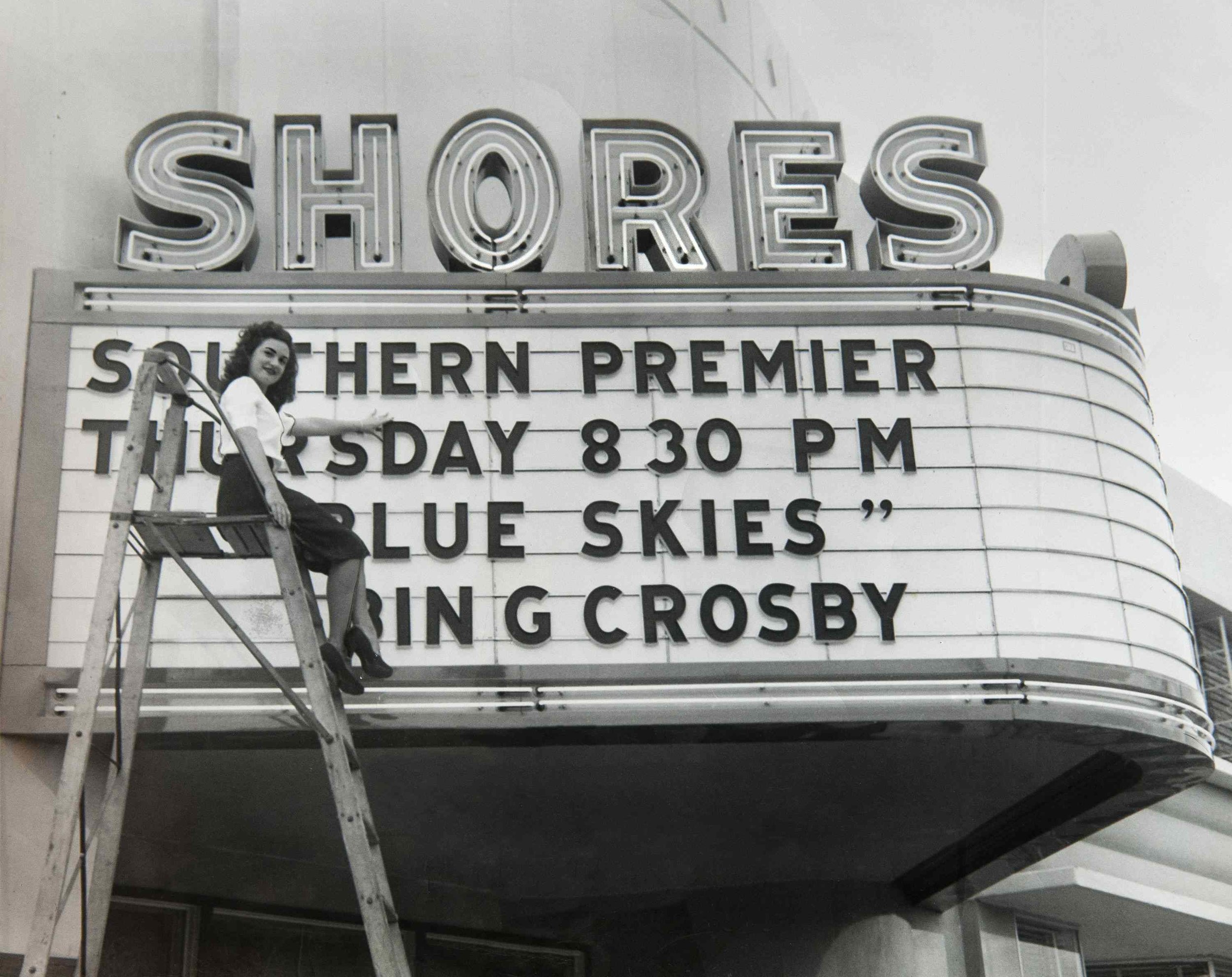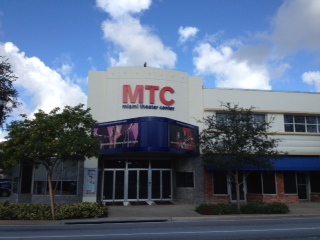Why does a blind man visit the Grand Canyon?
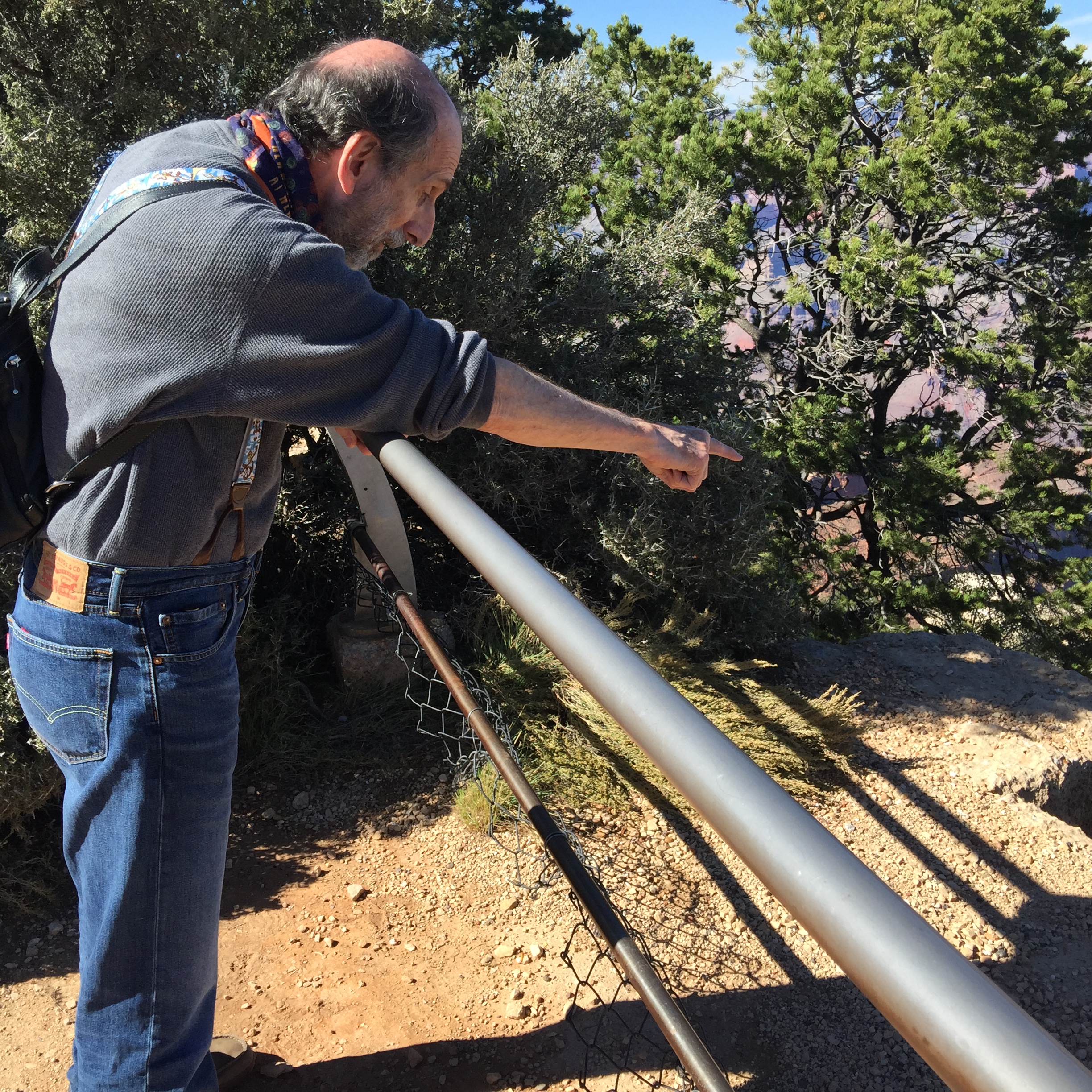
To hear the sights of course.
I recently signed up for a tour from Phoenix to the Grand Canyon and to my delight it included non-stop narration over the 6 hour trek to the big abyss. Picked up some useful information and some pretty good food along the way (though I did not try the cactus fries).
Becoming the 48th state in 1912, most of Arizona’s land remains unspoiled; you pass through the desert dotted with cactus and head north through forests of pine, fir, and spruce trees. Large swaths of undeveloped land belong to many Native American tribes including the Navajo Nation. I was impressed to find that so much of Arizona’s reservation land remains casino free – unlike so many reservation hosted casinos around the country that give new meaning to “pay back.”
On our way to the canyon, we stopped in Sedona – a funky little town with metaphysical shops, talismans, vortexes, and celebrity vacation homes – a sort of Key West of the desert.
I’ll attempt to shrink the Grand Canyon’s long history into a short sentence: The Colorado River is a chisel that carved out the Grand Canyon over the past 6 million years, steadily cutting layer after layer of sediment into a channel that is 277 miles long, ranging in width from 4 to 18 miles with a vertical depth of more than 1 mile.
The outcome is a splendid example of erosion. The immense gorge is one of the seven natural wonders of the world, is visible from outer space, and boasts 5 million visitors annually. It is a wilderness of rock, light and shadow.
Bottom line: I didn’t see much.
I couldn’t see the massive wingspan of the condor, nor glimpse deer, elk, mountain lion, raven or antelope, nor any of the 2,000 varieties of plants that populate the canyon. And, of course, I missed seeing the depths below.
However, though the sights were vast, so were the sounds. I cottoned to the many languages I continuously heard floating in the air within 5 feet around me – a mashup of accents from foreign countries like Japan, Germany, France, Australia, Russia and Kansas.
I visited the eastern and southern parts of the South Rim of the canyon. The soft cool wind kept surrounding me like a garment as I moved from point to point, wearing the breeze like a linen jacket at the Desert View Watchtower and then like a spooky cape at Yaki Point. I intoned a sublime meditation at Yaki as the environs took over my body and brain.
[video width="320" height="240" mp4="http://www.insightfortheblind.org/blog/wp-content/uploads/2015/11/Yaki-Point.mp4"][/video]
I loved the blustering gusts at Mather Point even though I missed the sunset doing its slow dance with the vast cavern. I missed the sunrise too because I was asleep back in my hotel room.
Many visitors asked me if I felt anything awesome. I know they wanted the blind man to sense something grand. I did not want to disappoint them, so I channeled some down home Native American ideals I had just learned and waxed on about an “expansive spiritual space governed by Mother Earth and Father Sky and how we must work not ‘off’ the earth but ‘with’ the earth and how we must govern our behavior in a deep sort of way by asking how what we do to the land today will impact seven generations from now.” Some folks were mystified with my answer. So was I.
I felt a little bit like Kokopelli, the mythical formidable story teller and prankster who wanders around the Southwestern states playing his flute. (In full disclosure, while visiting a Navajo reservation I did buy a flute made of handcrafted birch wood, which sounds pretty nice.)
A friend looking at some of the pictures my girlfriend posted on Facebook said, “Holy c--p! Don’t look down.” I did look down but didn’t see anything. I’ll try again tomorrow.
And that’s just it – many nights after I crawl into bed, I wonder if I’ll wake up in the morning being able to see. And if that should happen, I plan on racing back to the Grand Canyon, though I might just shut my eyes when I get there.
Steve Gladstone The Blind Dude
All photos and video by Aida Zuniga


